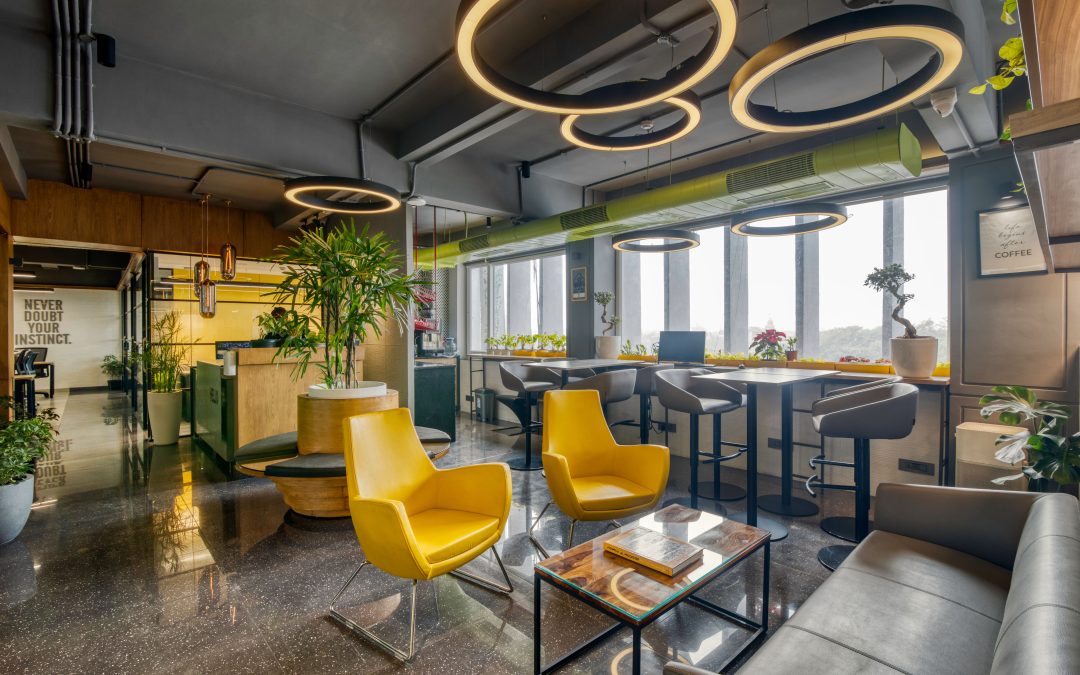Trends suggest that mixed-use development can meet the post-pandemic demands of developers, owners, tenants, and workers as we embrace the ‘new-normal’
By: Omar Sadaoui
A lot of curiosity subsists around the Office sector of Commercial Real Estate. Investors wonder, when will vacancies stabilize, are office buildings still a good investment, and what are the future needs for businesses after the economic impacts of COVID-19? With new multifamily and industrial developments headlining the forefront of Commercial Real Estate, the future of office space is left in question.
Current Market Data Suggests:
- Usage is up: physical office usage hit 40.5% nationally last month, the highest since the onset of the COVID-19 pandemic in 2020 (according to data from Kastle Systems)
- “Perhaps we actually don’t need a lot more office space. However, we do need the right type of office space.” says Julie Whelan, Global Lead of Occupier Thought Leadership at CBRE
- Average lease terms and rates remain consistent with pre-pandemic levels
- Tenants are paying higher effective rents, but receiving higher tenant improvement allowances to build space that attracts talent
Business and Tenant Outlook:
- The utilization rate or amount of space per employee was shrinking even before the pandemic (90-175 SF per employee)
- Tenants are seeking areas closer to highly amenitized experiences: food and beverage, fitness facilities, green spaces, and social entertainment offerings
- Landlord flexibility to provide flex space accommodating tenants with the ebb and flow needs of their business cycle
- Health and Wellness: Indoor air quality (IAQ), sustainability, green measures, and mental health awareness
Historical Repercussions:
- The booming energy sector in the 1980’s created unprecedented growth in new office demand until the Oil Bust and other contributing economic shocks created major and lasting vacancies
- Quality, flexibility, and innovation have proven to be vital and consistent in office performance, adaptability and recovery
- Andrew Matheny of Transwestern writes: “History doesn’t repeat but often rhymes. There are parallels between past and present. The most obvious is how the pandemic created a shock to office demand”.
Mixed-use offerings may be a way for retail and office to help one another and create an impactful synergy. Trends suggest that mixed-use development can meet the post-pandemic demands of developers, owners, tenants, and workers as we embrace the ‘new-normal’
How Mixed-Use Properties May Help Solve Retail and Office Challenges:
- Social offerings and collaboration create value and add incentive to commute to an office location
- Retailers near office space benefit from the higher density foot traffic and potential to capture revenue
- Diversifying across asset classes to provide sustainability adds protection for investors
As many businesses look for opportunities to draw employees into offices and contend with adopting a hybrid work strategy, one solution could be to locate near or provide a wide array of amenities, including options for retail, fitness, and dining, creating an enhanced “live-work-play” environment. Another answer could be joining forces with various like minded tenants to develop a creative office hub, promoting an environment and a desire for collaboration and community, such as Norfolk, Virginia’s ‘Assembly’ Building, where an old department store was renovated into a space that meets the needs of various office users.
Office investments still present outstanding opportunities to generate value and deliver superior returns for stakeholders with a focused approach. Rather than disregarding the future need for office space, and jumping to the conclusion that office buildings will be converted into multifamily to support housing shortages, expect to see a collaboration of mixed-use experiences for office, residential, retail, and hospitality users.
At the end of the day, we cannot deny the benefit gained from organic conversations and inspirations that are created in a collaborative office setting. Get in touch with SVN Cornerstone to find out where opportunities can be transformed into action.
Omar Sadaoui is an Associate Advisor with SVN Cornerstone. Omar has several years of construction and real estate experience, and specializes in the acquisition and disposition of Industrial, Retail, Land, and Development investments.
Referenced Articles:
Lessons from the Past for Office’s “New Normal”
A New Hub and Spoke Model Emerges As Office Occupiers Rethink Plans
Mixed-Use Properties May Help Solve Retail and Office Challenges

